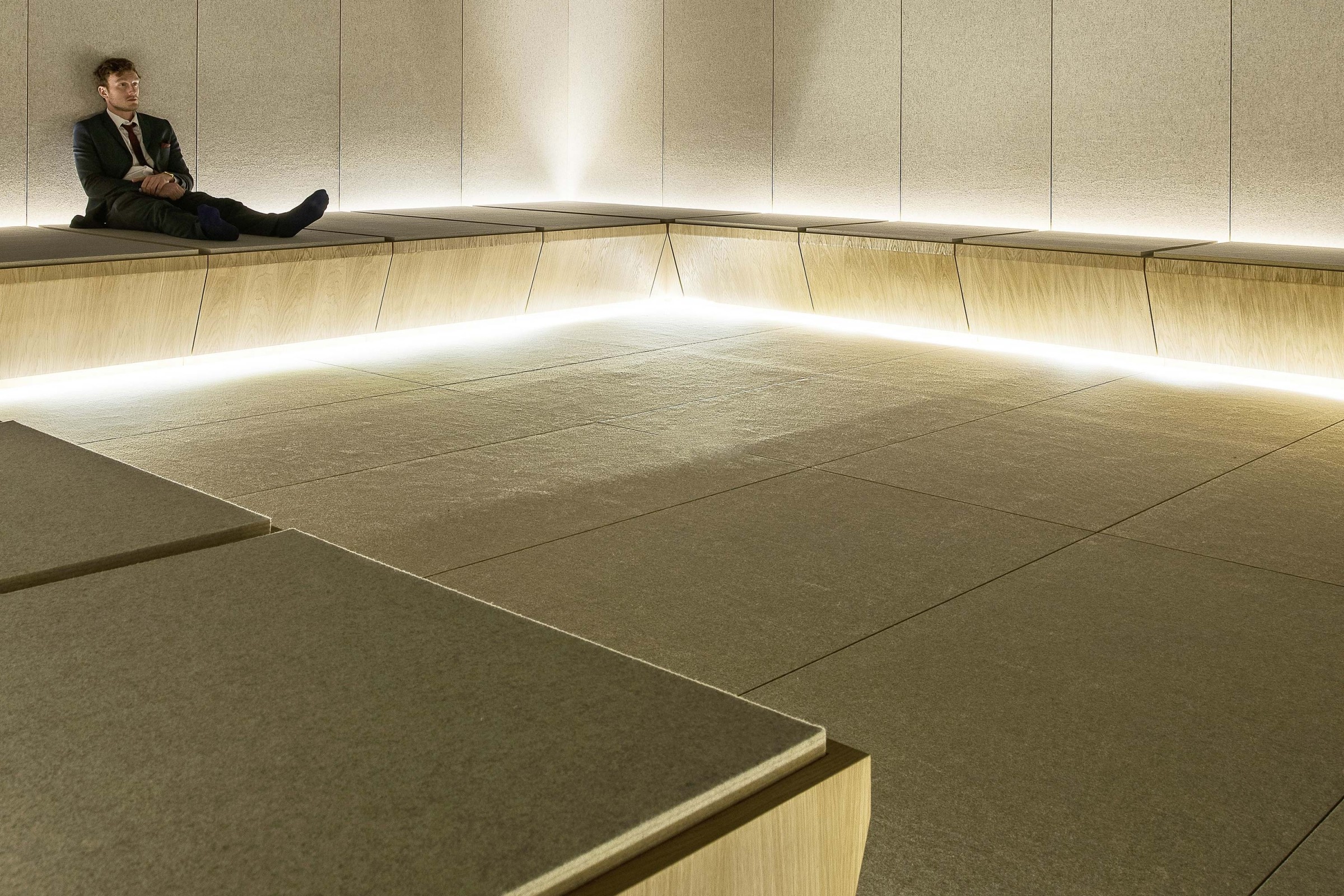What’s the Frequency, Kenneth?
Steven Dean & Fred Muench
Jan 1, 2023
Can technology help people be happier and healthier by changing our environment? A new frontier in healthcare is moving out of the laboratory and into people’s lives.
Environmental engineering design techniques, like feng shui, have been used for millennia to promote balance and wellbeing. Over the past 30 years, laboratory research has shown that certain shifts in our environment can subtly improve our cognitive and physiological health. We’re now at the point where technology is enabling these new frontiers beyond the lab and into our everyday lives.
Simple changes to the environment such as adding a plant to a room or switching from fluorescent to newer lighting systems can have a direct impact on health and well-being. But now products are being developed to intentionally manipulate various components of physiology in ways that could have a profound impact. Products such as f.lux modify our computer’s display color wavelength to shift with the natural external light, reducing potential circadian rhythm problems that can develop from using our devices at night. Light therapy devices combat the lack of sun exposure based on seasonal changes. These subtle shifts can produce real changes in our bodies.
Better Living Through Passive Interventions
The key is that these changes “passively” affect our physiology and produce cascading effects without burdening the end user. We know from years of health and user experience research that the amount of effort needed to change a behavior is directly related to a person’s willingness to engage in a new behavior. “Frictionless feeds,” which automatically load content as you scroll on websites such as Facebook, have dramatically increased time spent on those sites. Passive interventions may have a lasting effect on our wellbeing with the same minimal effort it takes to see the next Facebook post.
It’s been known that mild electrical stimulation via implantable devices can activate the vagus nerve, which has been shown to improve the outcomes of a number of illnesses, including depression, anxiety disorders, migraines, fibromyalgia, and more. Devices have been developed that stimulate the vagus nerve via external stimulation. Other passive devices have been used to entrain brainwaves using mild external electrical stimulation touching the skin. For example, Alpha-Stim pushes mild electrical pulses in the alpha brainwave frequency, which is associated with a calm but alert state. One less-explored area is passively entraining cardiovascular rhythms to optimal frequencies associated with autonomic nervous system balance.

Image by Luiz Abreu
What’s the Frequency, Kenneth?
When you push a child on a swing once it is in motion, you are taking advantage of the swing’s natural frequency of oscillation as the child swings higher and higher. Nearly all systems in the universe, including those within the human body, oscillate or vibrate at different rhythms or frequencies. Certain frequencies within these systems, when triggered by even small forces, can produce large oscillations within the system with little effort. These are called “resonant frequencies.” Resonance is a core component of applied physics and engineering. But while human beings have unique resonant frequencies in their cardiovascular system, these principles have not been leveraged by modern medicine. Resonance in the cardiovascular system is created when there is balance between two systems (e.g., heart rate and blood pressure).
While the cardiovascular system has several resonant frequencies, the one associated with autonomic system balance is at about 0.1 Hz (one cycle every 10 seconds). At this frequency, our “flight or fight” stress response and relaxation response are in harmony. In other words, when our cardiovascular rhythms are oscillating at this frequency, we’re calm, alert and regulated. When we are stressed out or anxious, our cardiovascular rhythms are out of sync and erratic. Because respiration affects the frequency of our heart rhythms, therapeutic breathing is one of the easiest ways to create resonance in the cardiovascular system.
Breathing Slowly in a Fast-Moving World
Research reveals that slow breathing somewhere between five and six breaths per minute (each person’s resonant frequency differs slightly because of height and gender variations) can produce physical and mental health benefits similar to more traditional treatments. For example, individuals with depression have cardiovascular rhythm disruption as demonstrated by abnormalities in their EKG and heart rate patterns (e.g., Nashoni et. al., 2004). Research suggests that therapeutic breathing at about this frequency may significantly improve depression symptoms (Brown, Gerbarg & Muench, 2014). The theory is that breathing at this frequency regulates and returns balance to the cardiovascular system. In turn, this helps activate a positive feedback loop. This could be a reason why yoga and meditation may effectively treat depression.
Evidence shows that mantras such as the rosary prayer may calm and empower individuals. Why? Because people tend to breathe at about six breaths per minute while they recite the prayer.
But while active interventions such as therapeutic breathing, yoga, meditation (and even the rosary) may get results for some, they may not be practical for many of us. Emerging evidence from pioneer researchers such as Evgeny and Bronya Vaschillo and Paul Lehrer suggests that we can trigger cardiovascular resonance through other methods, such as muscle relaxation or picture presentation. At Vagus Labs, we are working on methods to trigger resonance by manipulating vibration, pressure, light and electrical currents.
The Resonance Renaissance
Put simply, we can trigger the same cardiovascular frequencies associated with meditation breathing using passive health engineering principles. Our own qualitative research reveals that subtle vibration (on for five seconds, off for five seconds) while sitting in a chair creates cardiovascular resonance in about two-thirds of people. And participants who wear these vibration devices during workouts report improved endurance and energy. This makes sense, as it’s possibly regulating cardiovascular balance during exercise and recovery following exercise.

The Silence Room at Selfridges by architect Alex Cochrane. Photo by Andrew Meredith.
Through this research, we’re developing products to create “resonance environments” in car interiors, and homes using light, sound, and vibration for individuals with heart disease, depression and other disorders associated with cardiovascular dysregulation. These environments impact an individual’s autonomic nervous system through subtle variations in light while one is sipping on coffee or subtle vibration at specific frequencies while driving in a car. In either case, advancing this science could have profound implications for how we treat physical and mental illness and enhance wellbeing.
These types of approaches give individuals the opportunity to take more control over their environment and act to improve their health and well-being without medication. Movements such as “consciousness hacking” and “the essential self” are attempting to make the general public aware of the benefits of bringing balance to the body without medications. This path has clearly struck a chord, and newer research on the topic is permeating the mainstream. However, the research is in its early stages and the level of impact for various interventions is not yet clear. For example, some interventions manipulating light and color may have only immediate, short-term efficacy. And we may find some individuals come to over-rely on vibrations or other interventions similar to medications.
However, our investigations, along with the other burgeoning research, show these types of passive interventions offer significant promise towards promoting health and wellness for a wide range of individuals. We are in control of our bodies. And, with help, we can harness our naturally-occurring frequencies to live with a greater level of equanimity and balance.

